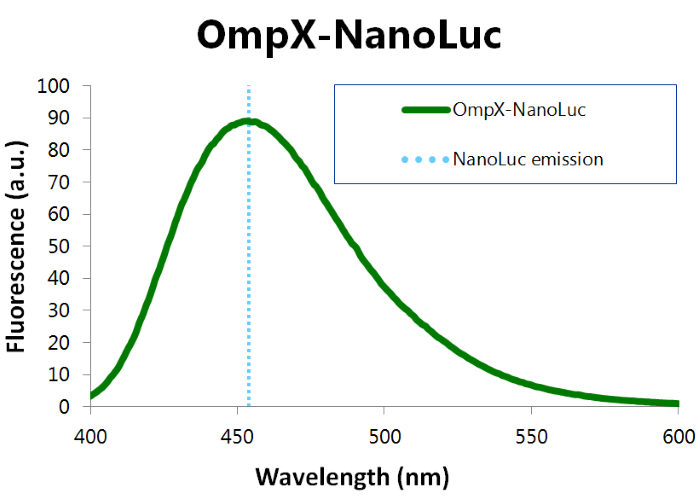Difference between revisions of "Part:BBa K1159001:Experience"
(→Applications of BBa_K1159001) |
|||
| Line 10: | Line 10: | ||
We've characterized NanoLuc by performing a bioluminescence assay with the OmpX-NanoLuc construct. This gave the following results (see Figure 1). | We've characterized NanoLuc by performing a bioluminescence assay with the OmpX-NanoLuc construct. This gave the following results (see Figure 1). | ||
| − | [[File: | + | [[File:TU_Eindhoven_Bioluminescence_Results_OmpX-NanoLuc.jpg]] |
| + | |||
| + | ''Figure 1: Fluorescence results of our OmpX-NanoLuc construct.'' | ||
===User Reviews=== | ===User Reviews=== | ||
Revision as of 19:25, 18 September 2015
This experience page is provided so that any user may enter their experience using this part.
Please enter
how you used this part and how it worked out.
Applications of BBa_K1159001
iGEM TU Eindhoven 2015
We as iGEM TU Eindhoven 2015 used NanoLuc in a BRET sensor together with mNeonGreen. The main goal of our project was to design a universal, modular biosensor that can detect molecules by using aptamers. NanoLuc worked very well for us. We've inserted NanoLuc in a pETDuet-1 vector together with Outer Membrane Protein X (OmpX) and a Bso-BI-linker, which is a long and flexible GGSGGS-linker with two BsoBI restriction sites. Several experiments gave very strong results for NanoLuc.
We've characterized NanoLuc by performing a bioluminescence assay with the OmpX-NanoLuc construct. This gave the following results (see Figure 1).
Figure 1: Fluorescence results of our OmpX-NanoLuc construct.
User Reviews
UNIQe147331ff52be14e-partinfo-00000000-QINU
|
•••••
iGEM TU Eindhoven 2015 |
This part works very well. We used NanoLuc in a BRET sensor, connected to OmpX with a BsoBI-linker. When furimazine is added, NanoLuc will work as a donor, which means that the energy of an electron falling back to its ground state is coupled to a transition of an electron in the RET Acceptor from its ground state to the excited state. We used mNeonGreen as acceptor in this BRET sensor. For more information and further characterization, see the Applications section above. |
UNIQe147331ff52be14e-partinfo-00000002-QINU

